Introduction
Today’s food supply-chain is complex, and consumers rely on the integrity of our food industry. In the early 2000’s consumer confidence was destabilized from toxic food supplied to our grocery stores. The question of liability was present, and blame was hard to pass. Large grocery stores started to see an increase in lawsuits from consumers eating poisonous food, shortly after, the result was the Global Food Safety Initiative or GFSI. The GFSI is an initiative driven by businesses to secure our global food supply chain. The members of GFSI collaborate to establish risk-based food safety standards by which food producers must comply. After the release of the standards, scheme owners sought to establish guidelines by which these standards could be achieved. Once scheme owners are approved by GFSI, the guidelines are translated into a GFSI-recognized scheme by which food producers could achieve GFSI-recognized certification. Since the initiation of GFSI, many food safety schemes have been accredited and thousands of audits have been completed.
Choosing the Right Scheme
Each of the GFSI-recognized schemes carries benefits and limitations. Choosing the right food safety scheme is critical and can result in lost time and resources if not chosen correctly. Factors contributing to this decision include:
- Customer Requirements
- Audit Frequency and Duration
- Audit Criteria
- Commodity
- Food Safety Experience
PrimusGFS
For the production and packing of fresh or minimally processed foods, PrimusGFS offers a scheme to obtain GFSI-recognized certification. PrimusGFS can be used to obtain food safety certification for operations involved in the growing, harvesting, packing and light processing of food for humans. PrimusGFS has incorporated the Food Safety Modernization Act requirements into the scheme to help companies comply with federal and state food safety regulations. PrimusGFS is widely accepted by suppliers interested in purchasing fresh produce. Audits are generally every 12 months and last one day. The criteria is outlined on the PGFS website. The criteria is straightforward and does not require extensive knowledge in food safety.
BRC
The British Retail Consortium or BRC certification can be obtained in all types of food including manufactured foods and processed foods. BRC offers certification for food, packaging, storage facilities and consumer products. BRC is globally recognized and applied in more than one hundred countries. BRC is widely accepted across all sectors of the food supply-chain, however, BRC is preferred by companies in the EU. BRC audits are generally every 12 months but can be less if the company gets a low score. The audits tend to be multi-day. The criteria is outlined on the BRC website. The criteria allows for risk-assessment and does require extensive knowledge in food safety.
SQF
Safe Quality Food or SQF code does more than just food safety. SQF can be used as a food safety and quality solution. SQF offers levels of food safety certification that range in difficulty. Two of the three standards are GFSI-recognized. SQF is widely accepted by suppliers interested in purchasing all food. Audits are generally every 12 months and are multi-day. You can review the process for SQF certification online on the SQF website. The criteria allows for risk-assessment and does require extensive knowledge in food safety.
Global GAP
Global Good Agricultural Practices or GAP is a certification program that supports and promotes food safety and sustainability in agriculture. Audits are generally every 12 months and are multi-day or single day. The criteria is outlined on the Global GAP website. The criteria allows for risk-assessment and does require extensive knowledge in food safety.
Other Audits and GFSI Recognized Schemes
There are many other schemes that you could use to obtain GFSI certification. Outside of GFSI certification are standard food safety audits. These audits are for companies that are new to food safety or for companies whose customers are not requiring GFSI-recognized certification. Standard food safety certification is obtainable and can be used as a tool to foster your approach to GFSI certification. Obtaining GFSI-recognized accreditation is a powerful tool that can be used to leverage your business. Selecting the right scheme is a prerequisite to obtaining GFSI certification. Once your business has decided on the right scheme, you can follow our 5-step process to obtaining certification.
How to get GFSI Certification
Establishing a firm foundation from which to build your food safety program will be essential for food safety success. The best approach for implementing food safety programs is to invest in assuring your food safety team is well trained. Even with a well-written food safety management system and an educated team you will need to adjust to fit the verbiage and lingo used by the GFSI scheme. You can conduct a preaudit to determine your standing with your selected food safety scheme and correct any noted issues. This will push your food safety program to success come time for the GFSI audit. After the food safety audit, you will be issued a report from which you will need to correct non-conformances using corrective actions prior to receiving GFSI food safety accreditation. Then, to assure you are continually following the GFSI standards, periodic reassessment is necessary and will be mandated by your certification body. Obtaining GFSI certification can be categorized into 5 steps:
- Build and Integrate a GFSI-Recognized Food Safety Program
- Conduct a Preaudit Assessment to Identify Gaps in your Food Safety Program
- Conduct 3rd Party Food Safety audit with a Qualified GFSI Certification Body
- Obtain GFSI-Recognized Accreditation
- Ongoing Recertification Audit
Step 1: Build and Integrate a GFSI-Recognized Food Safety Program
Components of a successful food safety program includes formal documentation of the processes, hazards and controls compiled from technical and scientific data. This data is used to validate your food safety program. GFSI food safety programs are generally based on Hazard Analysis and Critical Control Points or HACCP. HACCP plans are developed using the 7 principles of HACCP. No single food safety system is alike since it must consider your unique ingredients, processes, and facility. Each food safety plan must outline how the company handles each of the following GFSI requirements:
Step 2: Conduct a Preaudit Assessment to Identify Gaps in your Food Safety Program
Once the food safety plan is written and fully implemented, it is a good idea to assess compliance with your selected GFSI scheme. Internal assessments do not have to be conducted by in house employees. Instead, it is recommended that you use an outside source to provide an unbiased assessment of your food safety program. Internal food safety audits is a twofold process. First, observation. The written procedures should be compared to the practices. Where inconsistencies are noted, corrective actions must be made. Changes to the food process or to the food safety documentation may be necessary. It will be important to collaborate with other departments in order to receive buy-in. During the visual observation, special attention is given to critical control points, worker hygiene and the overall cleanliness and sanitary condition of the food facility. The auditor should interview a few members of different departments to fully understand the depth of the food safety culture. The second phase of the internal audit is review of all food safety documentation and food safety records. Records need to be consistent and documentation should be accurate and current. The result of an internal audit should be a corrective action report. Corrective actions shall be documented and where necessary root cause analysis to understand the underlying cause of serious or recurring food safety issues.
Step 3: Conduct 3rd Party Food Safety audit with a Qualified GFSI Certification Body
GFSI auditors are responsible for observing and reviewing your company’s food safety procedures, documentation, and practices. Like the pre-audit assessment, the auditor will conduct a visual observation and review your food safety records and documentation. In result, auditors shall issue a conclusion of your facilities against the GFSI standards. If non-conformances are identified, you may be required to complete corrective actions to receive GFSI certification.
Step 4: Obtain GFSI-Recognized Accreditation
GFSI certification indicates to buyers and consumers that you have taken steps to developing and implementing sound food safety practices. By adopting globally recognized food safety standards, it is a reflection of your organization’s commitment to the production of safe, quality and authentic products
Step 5: Ongoing Recertification Audits
Global Food Safety Initiative certification does expire. It is generally up to the food safety scheme owners on the frequency of recertification audits. As the industry changes, so does GFSI. Staying up on current events and industry news will assure you and your team are prepared for the adoption of new industry best practices, regulatory requirements, or changes to the GFSI standards. Considering how fast the food industry changes, it may be helpful to have a food safety consultant review your program periodically to identify gaps.
Summary
GFSI certification has shaped the food industry to restore consumer confidence. Food producers are burdened with selecting, implementing, and obtaining the right GFSI accreditation. The industry has relevant information on GFSI certification, however, the selection and implementation of the right GFSI food safety program should be overseen by competent and qualified individuals. Check out our GFSI Certification page for a free consultation. Global Food Safety Consultants is a group of expert food safety advisors with experience in all sectors of the food supply-chain. We are seasoned professionals that have helped hundreds of companies achieve food safety success. GFSC can help you achieve your food safety objectives. GFSC, your partner for all thing’s food safety.





